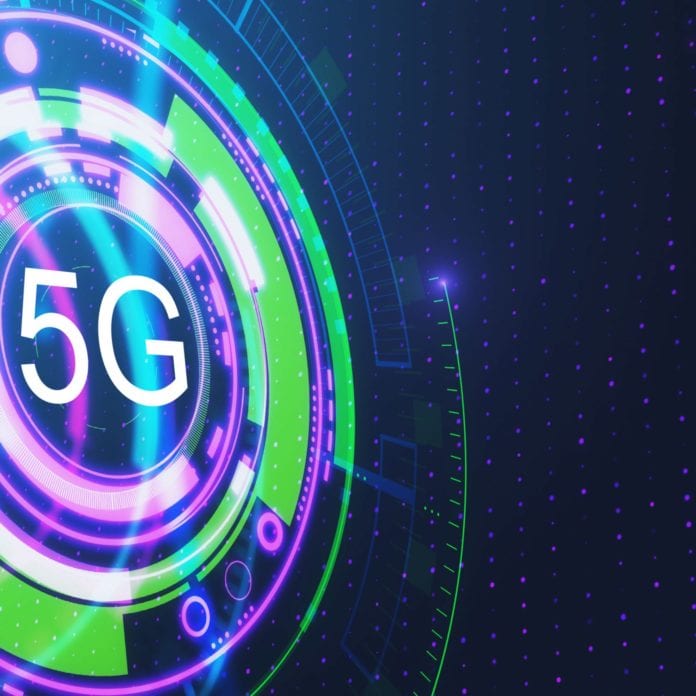5G is extremely complex and has widespread impacts throughout the network. This introduces many challenges but also provides many new business opportunities. For instance, it will allow more devices to connect at faster speeds with lower latency than ever before. This will enable companies to partner with network providers to develop innovative services for both their customers and their own use. The 5G network transformation provides at least a decade’s worth of future proofing. And like LTE, it eventually will be available worldwide, from major cities to rural communities.
That combination of longevity and ubiquity makes 5G ideal for applications whose devices will remain in service for a decade or longer and be sold globally. Two examples are connected vehicles and Internet of Things (IoT) devices such as asset trackers.
Some of the companies behind those applications are also end users, such as a manufacturer that builds and operates private 5G networks for its factories around the world. Others are mobile virtual network operators (MVNOs) and communications platform-as-a-service (CPaaS) operators. All of these companies will need to work with dozens of facilities-based mobile service providers to ensure that their customers always have a 5G connection.
But those relationships are far more complicated than they might appear. For example, each service provider partner must be able to accurately and precisely manage all of its physical and virtual infrastructure. This directly affects their ability to quickly provision, activate and manage the services supported by that infrastructure.
“Understanding the physical and logical placement of assets is strategic to several internal operations functions including network planning, asset accounting, inventory, service orchestration, catalog, activation, network assurance, service-level agreements (SLAs), policy, rating, and charging,” IDC says in a new white paper, Common Language Drives Customer Value for All Network Technology: 5G/MEC and Virtualized Networking Included. “The multilevel construct of the underlay and overlay connectivity infrastructure and the end-to-end partner-aided services to customers of all types brings additional layers of asset tracking complexity that must be addressed by each of these business and operations management domains.”
Transforming complexity into opportunity
Those capabilities are valuable for 4G, but 5G makes them absolutely critical. That’s because much of 5G uses new, complex and fundamentally different network technologies and architectures, such as multi-access edge computing (MEC), network slicing, software-defined networks (SDN), cloud computing and virtualized network functions (VNF). They enable new business models, dynamic network configurations, additional pricing and payment options, accelerated deployment of features and improved cost management — all of which must be guaranteed end-to-end (E2E). That’s no small feat with a single service provider, let alone the myriad that an application provider might partner with to launch and operate a global service.
In the IDC white paper, Research Vice PresidentKarl Whitelock describes the complexity from new technologies and business models such as virtualization, private networks, hosted networks, 5G, MEC, and IoT. To manage this complexity, service providers need a way to align their network assets with their business and technical objectives. That alignment is key to keep costs in check, addressing E2E service objectives, supporting partner accountability, maximizing interactive efficiency and more.
“A common nomenclature is essential for addressing these operational concerns and financial tracking requirements,” Whitelock writes.
This nomenclature enables service providers to describe the capabilities of their infrastructure, locations and other key attributes in an industry-standard way and then share that view across systems and organizations, such as internal business units and external business partners. By providing those systems and organizations with a common language, this nomenclature dramatically increases the accuracy and efficacy of network planning, inventory, service orchestration, catalog, activation, network assurance, SLAs, policy, rating, charging and more.
For example, MVNOs and CPaaS operators can use this nomenclature to identify the owner, location and functionality of each piece of partner infrastructure that they use. This kind of accurate, precise information is critical for provisioning services for new customers and then meeting their expectations for performance and SLAs.
For example, service providers now must be able to track each VNF and cloud-native network function (CNF) in three ways:
- Physically: the portion of the VNF/CNF linked to the computing platform where the software is hosted.
- Logically: the E2E service chain for each VNF/CNF.
- Logistically: the license usage permissions that the VNF/CNF software owner grants for each instance placed into service at that time.
“From a service assurance and SLA perspective, the physical and logical portions of a VNF/CNF must always be accounted for to maintain E2E service integrity,” the whitepaper explains. “From a business and asset perspective, specific knowledge of the physical/logical environment is essential for revenue tracking and partner settlement needs whenever partner-provided functionality is used. Mixed with all VNF/CNF capabilities is a hybrid assembly with existing physical network functions (PNFs) that must be tracked and managed.”
A common nomenclature provides those accurate insights in a standardized, easily shareable way. In the process, it facilitates dynamic inventory, enhanced service catalog, partner ecosystem management, policy management and B2B2X real-time charging.
These benefits aren’t limited to service providers, either. A recent example is the 5G Open Innovation Lab (“5GOILab”), which works with corporations, startups, academia and government institutions to leverage 5G for smart agriculture, intelligent transportation, Industry 4.0 and other applications. The lab is now using this common nomenclature to fast-track those innovations, just as service providers use it fast-track their 5G network rollouts.
“One of 5G’s strengths is that it’s designed to support even the most demanding enterprise applications, such as up to 1 million IoT devices per square kilometer with the Massive Machine-Type Communications (mMTC) part of the 3GPP standard,” said Jim Brisimitzis, 5G Open Innovation Lab general partner. “A common nomenclature complements that by ensuring that service providers can provide the right capabilities and capacities in the right places to support all those IoT devices. It’s the kind of foundation that will help 5GOILab ensure that 5G lives up to its potential.”

